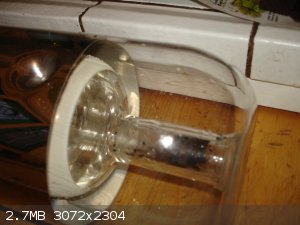
Mothman - 27-1-2019 at 11:22
So I just ordered a Dewar condenser and I'm looking for things to do with it, as I am quite fascinated by this field of chemistry that I will soon
have the ability to dip my toes into. Of course, since I only recently started learning about cryochem I am still figuring out projects I could do
with this equipment. If anyone is wondering why I bought equipment before having an idea of what I want to do with it, I'm the type who likes
expanding their lab's capabilities even before my projects have caught up with the potential of the equipment, I'm sure I'm not the only one on here
like that 
Anyways, a few idea's I've had for simple projects are the distillation of computer duster (a fluoroethane of some sort usually, the exact chemical
depends on the brand), the production of liquid ammonia, and the generation of anhydrous liquid chlorine. I'm sure there is other stuff that could be
done as well, things such as reflux of a very low temperature reaction mixture or something of the sort, and I recall reading about an organometallic
reaction involving copper that takes place at extremely low temperatures but I cannot recall much more information about it at the moment.
If anyone has any ideas for projects I would much appreciate the suggestions, thank you all!
Ubya - 27-1-2019 at 12:55
birch reduction of benzene rings (liquid ammonia and sodium metal)
many reaction need subzero temperature (most of the time dry ice temperature) but right now i can't name even 1
12thealchemist - 28-1-2019 at 04:38
Almost any reaction involving BuLi uses a dry ice/acetone bath, including making LDA (lithium diisopropylamide, in situ base). However, these reagents
are air sensitive.
I imagine your organocopper reaction was a Gilman reagent. These are made by adding an alkyl lithium to a copper(I) salt in an ether solvent. Again,
dry ice/acetone bath is typical.
Heptylene - 31-1-2019 at 12:58
Ozonolysis requires dry ice temperatures (and ozone of course). That's all I can think of right now.
Mothman - 31-1-2019 at 21:33
I think I'm going to dry distilling sulfur dioxide, nothing crazy low-temperature, and it would be interesting to see what can be done with the
liquid.
After that I might tackle liquid ammonia for a birch reduction. I have lithium already, and I've always wanted to see solvated electrons in person!
Or I could create the ultimate bong...of course the hazards I can see are the formation of liquid oxygen in an environment full of organics combined
with the fact that there's a spark at the end of the whole thing, and the fact that there are flames near organic vapors from the cooling bath.
Probably a terrible idea in real life but a man can dream can't he?
Tsjerk - 1-2-2019 at 01:05
Making liquid oxygen!
12thealchemist - 1-2-2019 at 01:30
This paper might be of use, with regards to the liquid SO2
Attachment: Elving, Markowitz - 1960 - Chemistry of solutions in liquid sulfur dioxide.pdf (7.8MB)
This file has been downloaded 1027 times
Dan Vizine - 3-2-2019 at 15:27
So, you have access to LN2 I guess?
SWIM - 3-2-2019 at 18:25
Cryochemistry?
I've been wondering if that's what this big old vacuum-jacketed watermelon is for.
It's got a 1000 ml or so chamber inside, but the thermometer port is in a sort of vestibule at the top opening that communicates with the main chamber
via two thin and rather twisty openings.
At the bottom of the main chamber there is a tube fused in that goes through the vacuum jacket and is open on the outside but sealed on the inside.
That tube has two other tubes around and concentric to it inside the main chamber.
The inner tube is open at the top and the outer is open at the bottom, communicating with the main chamber. This makes it almost impossible to get
anything in there.
Been cleaning a bunch of carbon out of that nightmare of a lower chamber and it is nearly clear, but the purpose of this setup really escapes me.
It seems to be designed to get stuff stuck in it more than anything else.
The concentric tubes at the bottom are the only part that isn't protected by a vacuum jacket, so I suppose it's a heat input site (maybe just room
temp heat input?) Or maybe its cooled from there.




